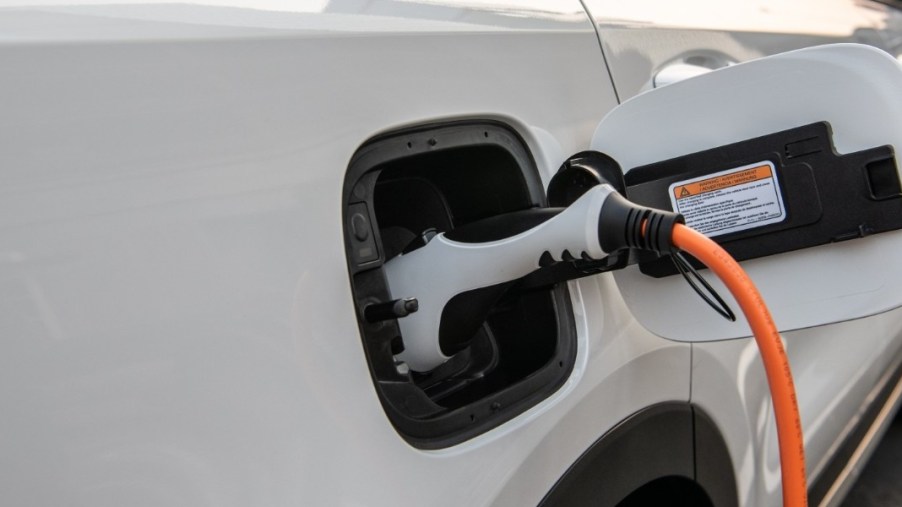
Are Plug-in Hybrids and EVs With Range Extenders the Same Thing?
Many drivers refuse to get an electric vehicle because they fear having the car run out of power and having no way to charge it. Automakers have come up with a new type of accessory to ease this anxiety, known as a range extender. It’s a tiny gas-powered engine that can be added to some EVs, which can then boost the driving range. They are not the same as plug-in hybrid (PHEV) cars, however, and here’s why.
What is a range extender?
A range extender is a second source of battery power for EV. Essentially, it’s a small gasoline engine that can be used to charge the EV battery as you drive.
The range extender only kicks in when your EV battery is running low, so you don’t have to worry about constantly filling your EV up with gas. It’s simply a tool to make sure you can reach a charging station in the event that you had to reroute, and couldn’t access the charging station you had planned on stopping at.
Range extenders are similar to electric generators. They don’t provide your EV with a ton of extra range, but it should be enough to help you reach a gas station to refill if necessary.
To further understand how range extenders are not the same as PHEVs, we need to define what an EV and PHEV are. The U.S. Department of Energy reports,
“An EV is defined as a vehicle that can be powered by an electric motor that draws electricity from a battery and is capable of being charged from an external source. An EV includes both a vehicle that can only be powered by an electric motor that draws electricity from a battery (all-electric vehicle) and a vehicle that can be powered by an electric motor that draws electricity from a battery and by an internal combustion engine (plug-in hybrid electric vehicle).”
How are PHEVs and range extenders different?
Given the definitions, it can be easy to assume that an EV with a range extender is the same as a PHEV. That’s not quite the case.
An EV with a range extender is a type of hybrid, but it’s still powered mainly by electric motors. The fuel is merely there to give it an additional boost, and then only when you’re running low on power.
PHEVs, on the other hand, may have an electric motor, but it’s mainly the internal combustion engine (ICE) that propels it. The electric motor helps give PHEVs greater range, so you don’t have to refill with gas quite so often.
The U.S. Department of Energy reports that PHEVs can be charged by plugging them in an outlet, charging them, using the ICE, or even through regenerative braking. The range is still not superior to that of an EV, however, which is why some consumers continue to prefer EVs to PHEVs.
How popular are range extenders?
If you’re interested in an EV with a range extender, the pickings are slim in the U.S. There is currently only one EV with a range extender at the moment, and it’s the Karma GS-6. This luxury PHEV which is often compared to a Corvette, comes with a hefty price tag, however, and is out of the budget range for the average consumer. You might be able to find a used vehicle with a range extender, like the Cadillac ELR, BMW i3, BMW i8, or Chevrolet Volt.
Automakers have made the decision to pull away from range extenders because there are now more charging stations, and EVs have a greater range. This makes it easier to plan a road trip without range anxiety.
Still, there are plenty of rural areas in America that don’t have charging stations. They may be common in cities, but you’ll have a difficult time finding one in smaller towns that don’t even have red lights.
Because of this, there are some automakers who are considering bringing back the range extender on EVs, like the Ram 1500 and Ford F-150 Lightning. This is only a rumor, so nothing has been confirmed yet.
There is a chance that modular range extenders will be introduced as an accessory, which will allow drivers to fit it to the vehicle when needed, and remove it when it’s not necessary. Again, this is not confirmed. It would help convince more drivers to buy electric cars if this was offered, however.


